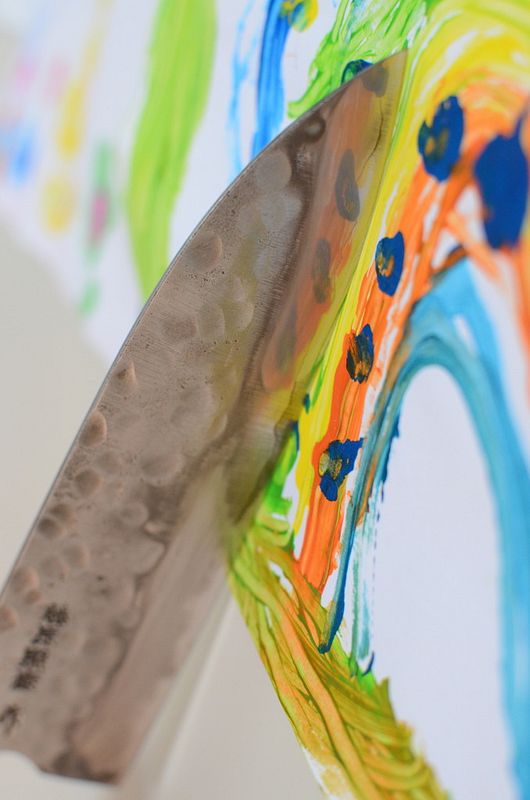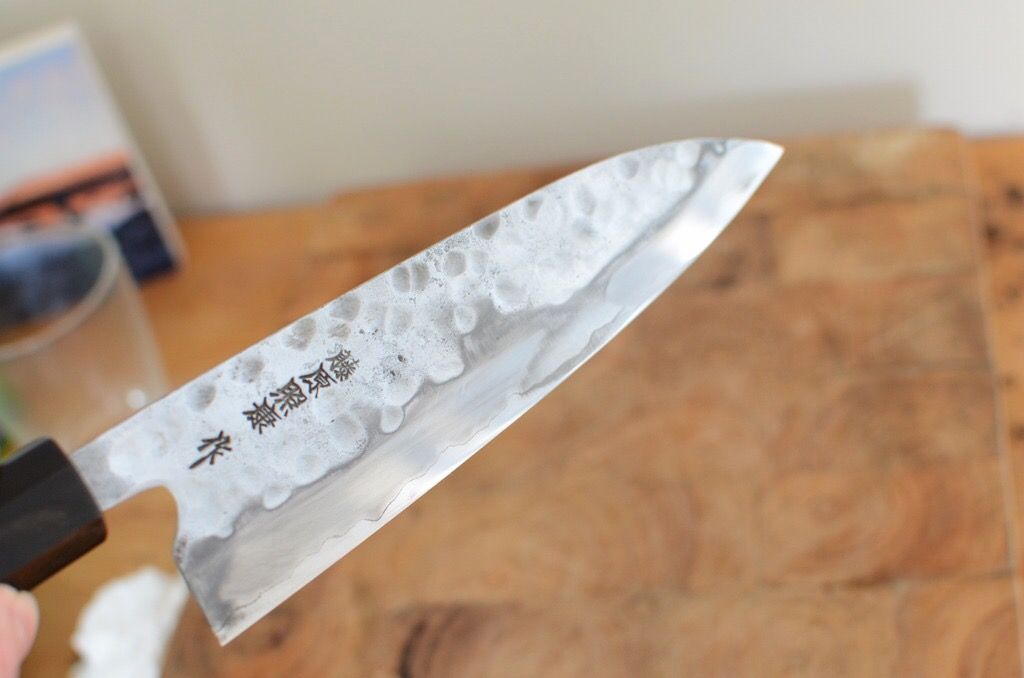Badgertooth
Senior Member
- Joined
- Nov 5, 2015
- Messages
- 2,664
- Reaction score
- 655
It's been a while since I've written up a natural stone and I have several I'd like to do but life is getting crazy. And I also worried that I was only adding noise and pseudo knowledge to an echo chamber and it made me doubt myself a little. But there's nothing for getting over a hump quite like getting the first one out the way.
So a quick rummage in the stone cupboard and I found this under a tenugui - virginal and unused after its initial sealing and lapping
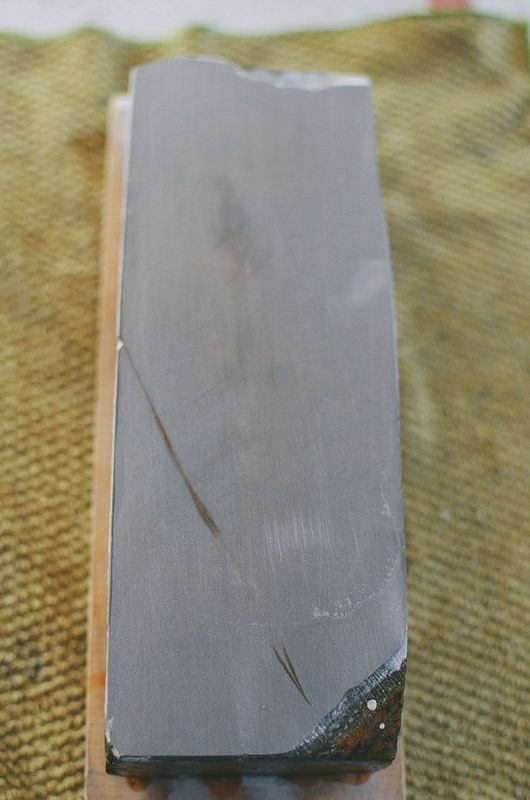
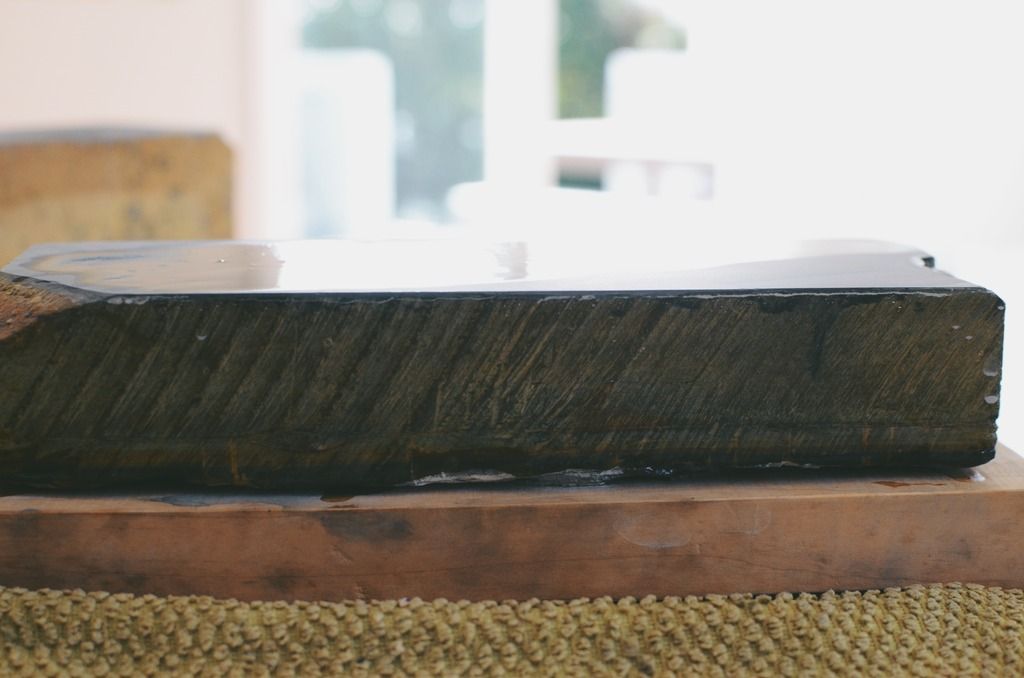
I wish there was something to remark on about its appearance but it is the most generic green brown you could imagine. Some later photos of it in action benefit from my camera's white balance going a little out of kilter and making it seem a little yellower than it is. It is big and there is a corner missing
I'll add a little visual interest with the stone I chose to set up an initial scratch pattern on a knife that I was using to test, a Thai orange binsu:
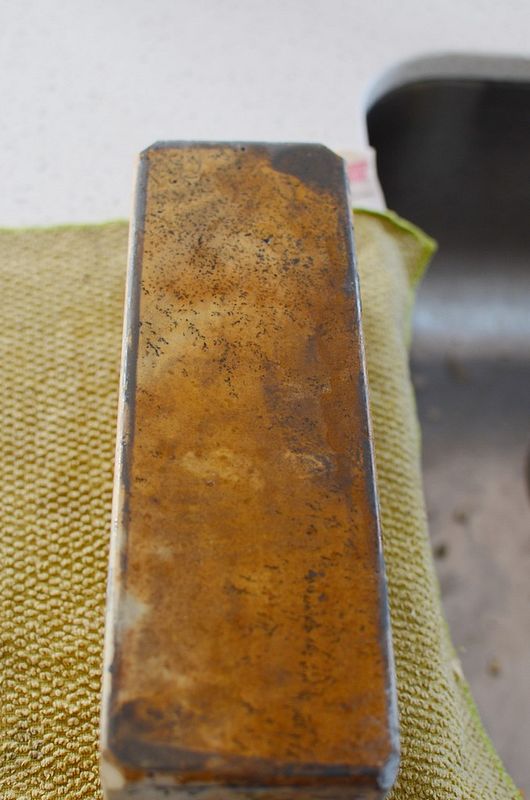
As Miles (Aranyik) has the prerogative to call them whatever he damn well pleases, I unashamedly admit that I love the name "carbon snowflake", it's incredibly descriptive:

The stone deserves its own write up but I can tell you that it is starting to burnish up which is when they become incredibly versatile and act with a polishing ability that is at odds with their sub 1k grit typicity.
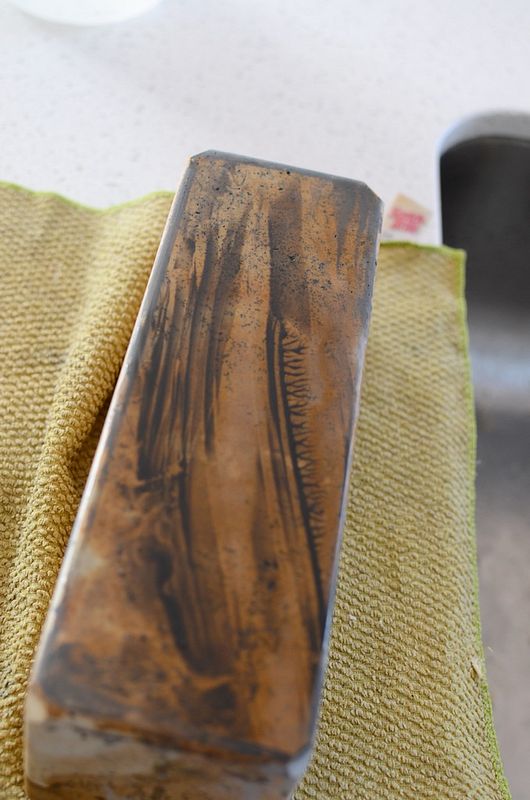
It establishes a polish that simply cannot be replicated by any other stone within 2K of its grit rating
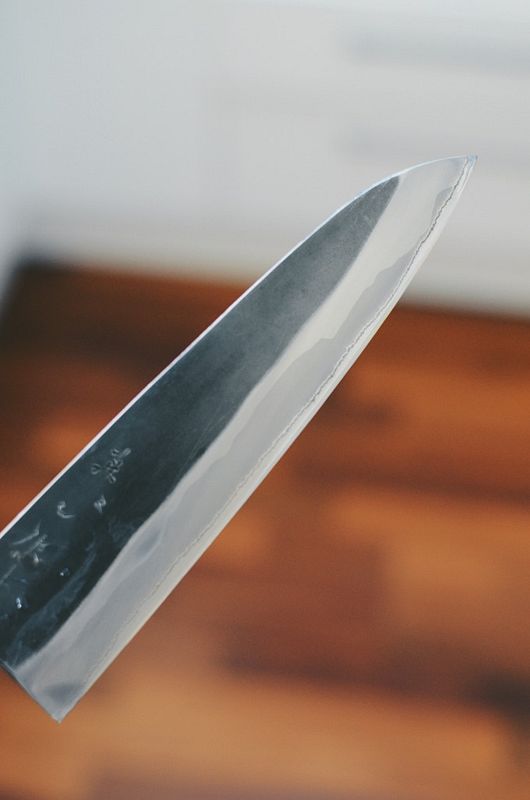
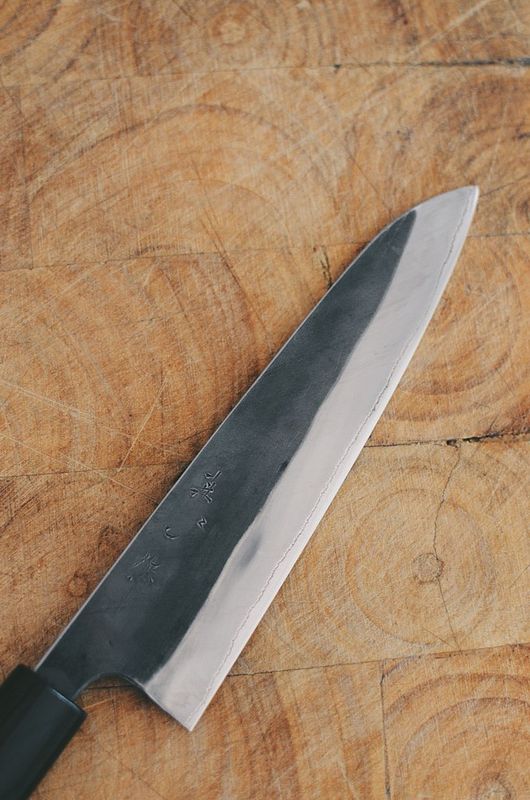
But back to the stone at hand with the scratch pattern established at a lower grit.
In use the stone is far harder than I would have thought and absorbs no water whatsoever. Initially I added too much water and it took quite a bit of work on the wide bevel to get the slurry & feedback where I wanted it.
Too much water
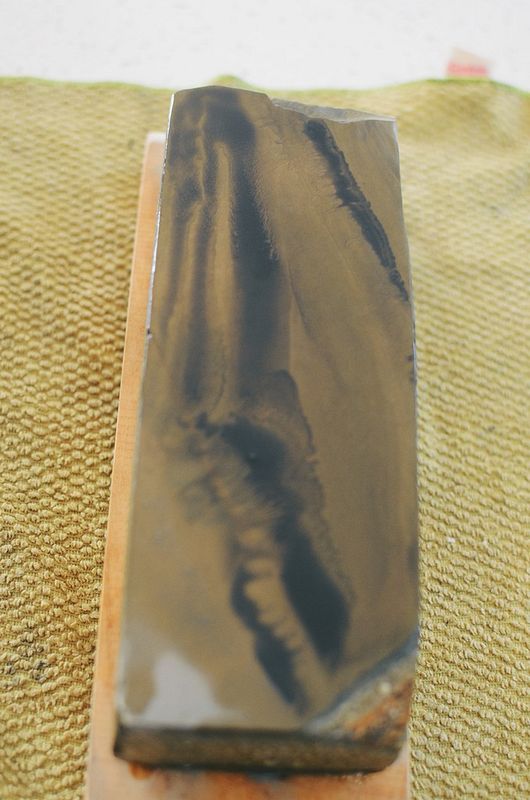
Juuuuust right
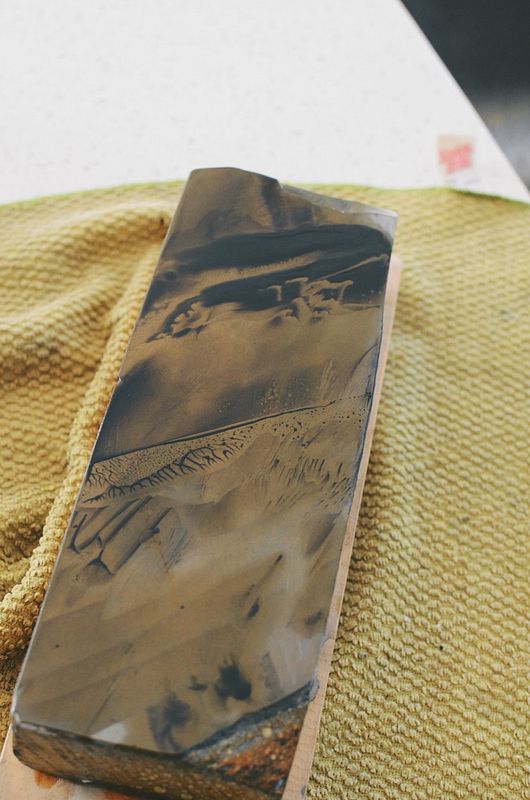
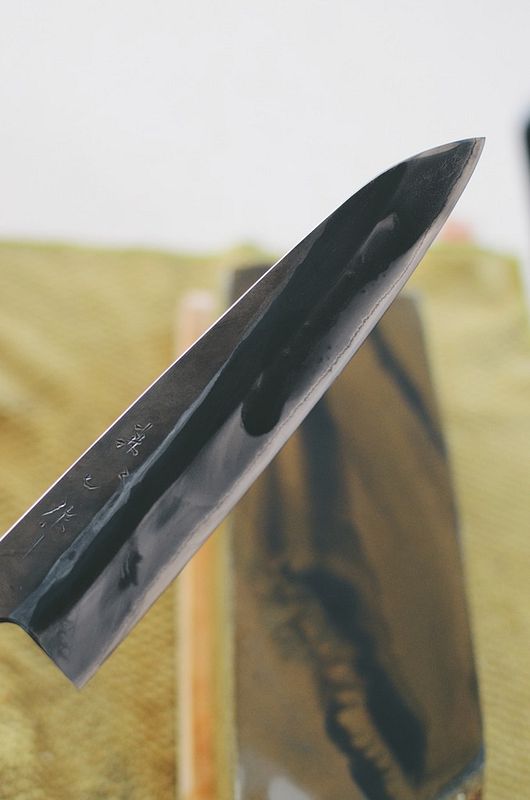
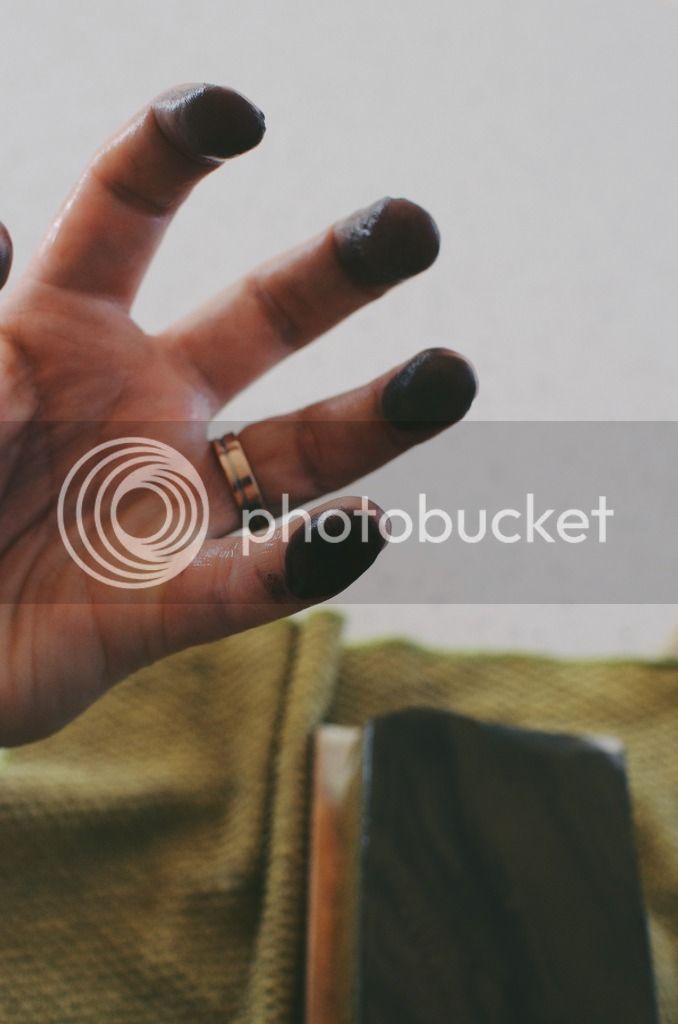
The stone is smoother in feedback than what I typically associate with Suita. So hard and smooth but still this side of glassy. With too much water I had to work for the slurry but once it got started things got much easier and really started to cut. On account of the smoothness and fineness, this is not a stone for dramatically contrasted polish jobs, this is the stone that brightens everything it touches.
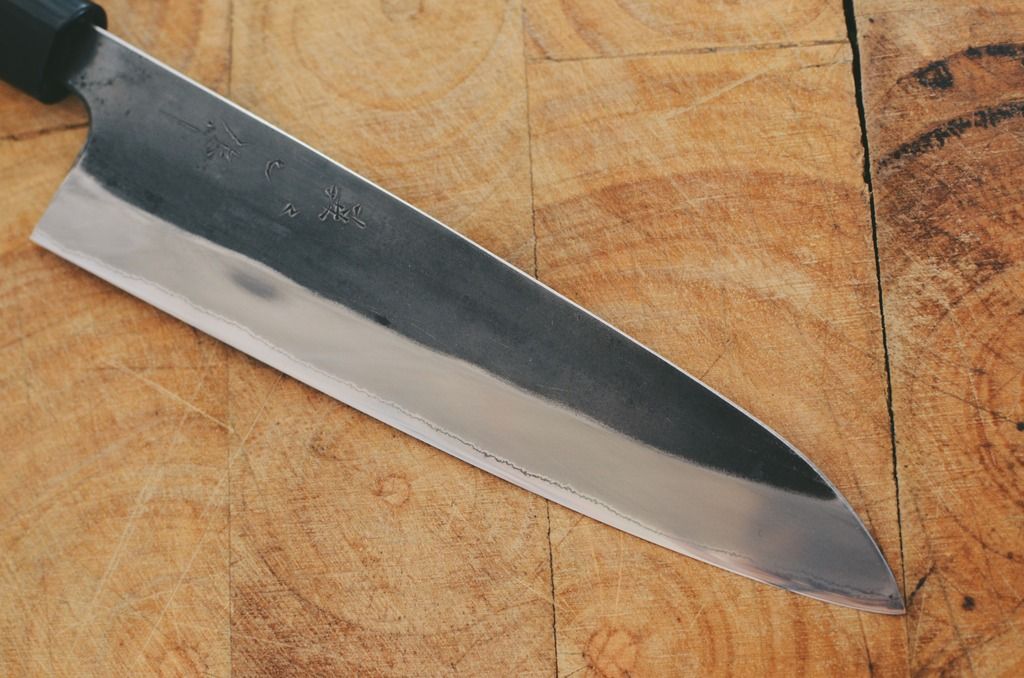
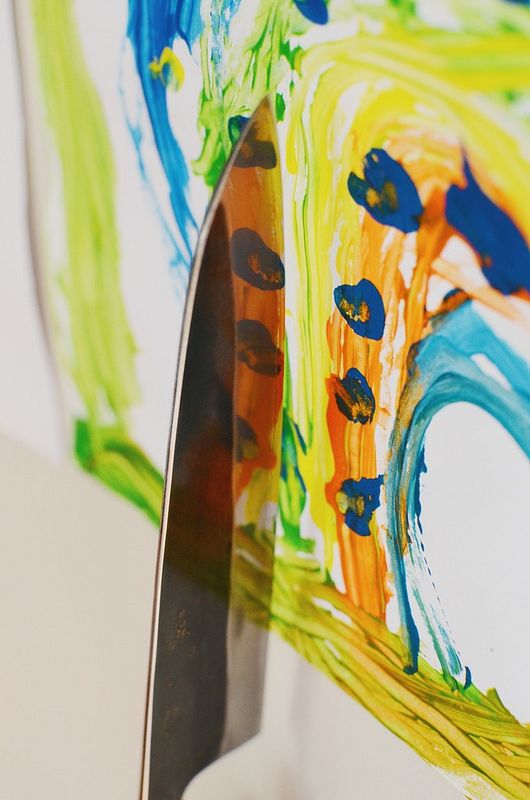
The edge left is more typical of most Honyama finishers, think shoboudani or Narutaki. What tooth there was to be had I think is more as a result of the enormous jump I made from the binsu (sub 1k) to an outright fine finisher. This is a good finisher.
So a quick rummage in the stone cupboard and I found this under a tenugui - virginal and unused after its initial sealing and lapping


I wish there was something to remark on about its appearance but it is the most generic green brown you could imagine. Some later photos of it in action benefit from my camera's white balance going a little out of kilter and making it seem a little yellower than it is. It is big and there is a corner missing
I'll add a little visual interest with the stone I chose to set up an initial scratch pattern on a knife that I was using to test, a Thai orange binsu:

As Miles (Aranyik) has the prerogative to call them whatever he damn well pleases, I unashamedly admit that I love the name "carbon snowflake", it's incredibly descriptive:

The stone deserves its own write up but I can tell you that it is starting to burnish up which is when they become incredibly versatile and act with a polishing ability that is at odds with their sub 1k grit typicity.

It establishes a polish that simply cannot be replicated by any other stone within 2K of its grit rating


But back to the stone at hand with the scratch pattern established at a lower grit.
In use the stone is far harder than I would have thought and absorbs no water whatsoever. Initially I added too much water and it took quite a bit of work on the wide bevel to get the slurry & feedback where I wanted it.
Too much water

Juuuuust right



The stone is smoother in feedback than what I typically associate with Suita. So hard and smooth but still this side of glassy. With too much water I had to work for the slurry but once it got started things got much easier and really started to cut. On account of the smoothness and fineness, this is not a stone for dramatically contrasted polish jobs, this is the stone that brightens everything it touches.


The edge left is more typical of most Honyama finishers, think shoboudani or Narutaki. What tooth there was to be had I think is more as a result of the enormous jump I made from the binsu (sub 1k) to an outright fine finisher. This is a good finisher.





